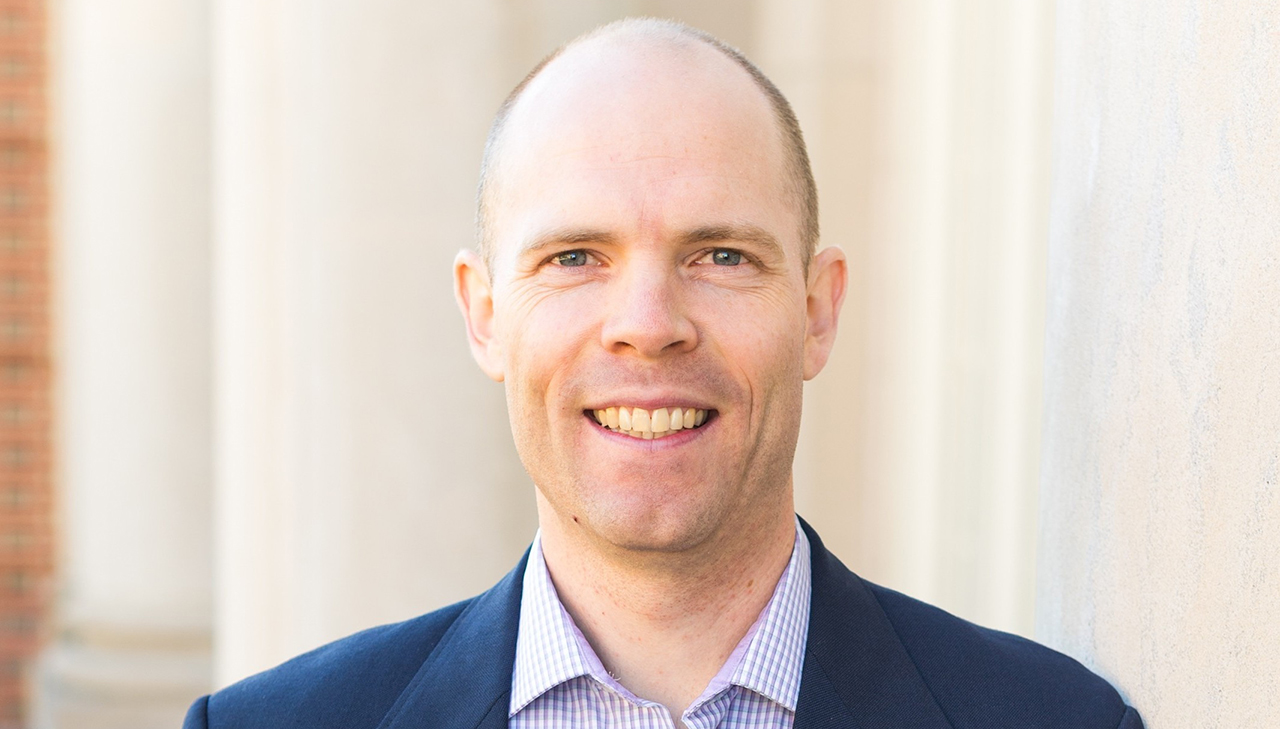
The economic impact of the COVID pandemic has been measured in many ways, as will the extent of recovery as the pandemic
wanes. Political figures, TV talking heads and other opiners often cite the stock market, in particular the widely reported Dow Jones Industrial
Average, as a gauge of overall economic strength. It’s a convenient measure to use,
but it’s not a very good one.
For all the claims of officials, candidates and commentators, the stock market is
not the economy. It’s a poor way to try to measure the economy, as the pandemic and
its aftermath make clear once one understands what the stock market is and isn’t. This helps explain a robust stock market in an
economy with high unemployment, reduced GDP and other indicators of significant weakness.
 |
Jimmy Hilliard, Harbert Eminent Scholar in Finance
|
That may seem counter-intuitive, but it’s not, said Harbert Eminent Scholar in Finance
Jimmy Hilliard.
“The health of the real economy is measured contemporaneously by GDP, GDP growth,
unemployment, consumer sentiment and similar measures. By contrast, stock market prices are forward-looking,” he said. “They depend on forecasted
cash flows that extend far into the future. Today’s booming stock market reflects the prediction of a robust future economy.”
That future economy may seem pretty far off, especially in a world of instantaneous
communication and implementation of decisions. “Using reasonable estimates of earnings
growth and discount factors, we can develop examples where 80% of stock price is determined
by earnings that occur after five years,” Hilliard said.
“This also means that an isolated event that happens this year does not have a large
effect on stock prices. Using the same logic, we note that some of today’s high-performing
stocks have negative earnings. But their prices are based on forecasts that earnings
will grow rapidly after some point in the future.”
Yet to hear most of the public discussion about it, one would think the stock market
is a snapshot of what’s happening now. Technology columnist Farhad Manjoo, writing in the New York Times, noted that the stock market’s “gyrations during the
last few decades have made it less and less of a reliable proxy for understanding
the health of the economy at large – even if presidents and pundits still point to
it as a benchmark that makes a difference in people’s lives.”
Not entirely in jest, Manjoo suggested that perhaps stock market reports should carry the same “For entertainment
purposes only” warning used by palm readers and fortune tellers. “Treating stock prices
as an economic indicator distorts Americans’ views about what’s actually happening,
who exactly is winning and losing, and what sort of growth really benefits people
in the economy at large,” he wrote. “The more we focus on the market, the less of
the economy we see.”
Hilliard described the stock market as a “useful but incomplete indicator of long-term
economic health,” noting that forecasting is complex and always hazardous due to unexpected
events. Major forecasting entities such as the Congressional Budget Office, the Federal
Reserve Board of Governors, the St. Louis Federal Reserve Bank and various money center
banks weigh many economic factors in making these forecasts.
Still, the popular perception persists of the stock market, in particular the Dow,
as a sound measure of the economy. In the political realm, the Dow is often cited
as proof that the economic policies of a party or a candidate are working, or that
the policies of the other side are failing. This political shorthand may be convenient,
but the reality is not that simple.
“It is true that the market ‘votes’ on economic policies,” Hilliard said. “However,
some caveats are in order. Economic effects may lag policy changes. And there are many other factors that affect markets. Think COVID-19. Or one might hesitate to attribute the ‘90s boom to economic policy when the primary
driver was likely the emergence of the Internet.”
With talk of recovery comes the question of who’s doing the recovering. The stock
market offers a skewed picture of the extent of recovery and the possible beneficiaries.
That’s not everybody, not by a long shot. A rising stock market is not that rising
tide that lifts all economic boats.
About half of Americans own stock, but for most it’s a relative handful of shares
in a 401(k) or other pension account or maybe a few shares in a personal investment
account. Although important to the individuals, in terms of value in the overall market, these holdings are small. As Manjoo noted, the wealthiest 1 percent of Americans hold almost 40 percent of the value
in stock accounts and the wealthiest 10 percent hold a whopping 84 percent.
High degrees of concentration persist among companies as well as stockholders. In
the S&P 500, a more broad-based market measurement that Hilliard called a “much better” indicator of market performance than the Dow,
more than half the growth in 2020 came from just three stocks – Apple, Microsoft and
Amazon.
That might look like an unhealthy factor for economic recovery, but it’s really not
an issue for investors. “Savvy investors do not worry very much about the concentration in these three stocks,”
Hilliard said. “Our research shows that the market is largely efficient. This means that ‘prices are right’ and in such a market you hold each stock in proportion
to its market capitalization.”
Market capitalization is the total dollar value of all outstanding shares of a company
at the current market price. Suppose, for example, that Apple’s market capitalization
is 10% of the total market. Apple should then make up 10% of your portfolio. More
than that and you’re essentially betting on Apple. Less than that and you’re betting
against Apple.
 |
Danny Qin, Assistant Professor in Finance
|
Whether they see it as a measure of the economy or not, and even if their holdings
represent but a sliver of total stock value, more individuals are investing in the
stock market through retail trading apps, no-cost brokerage services and other easy-to-use
mechanisms. There’s obvious appeal in a surging stock market and the prospect of high
returns. With interest rates low and other investments offering minimal returns, this
might look like a path to recovery for some.
“Historically, research has shown that experiencing a significant economy-wide event
affects stock market participation,” said Danny Qin, Assistant Professor in Finance at Harbert. “So, the high market returns after the short March 2020 bear market may have increased
participation.”
For some, investment became something of a sport during a time of empty arenas and
dark stadiums. “Many individual investors may have used the stock market as a substitute
for traditional gambling venues, such as sports betting, when sports were on hold,”
Qin said.
Qin also noted that the emergence of easy no-cost brokerage services, especially mobile
interfaces, and fractional buying of stocks “lowered the barriers to entry for individual
households and enabled a democratization of stock markets.”
Ease of entry, however, does not equate to exiting with profit. Retail trading abounds
with pitfalls.
“The conventional wisdom of trading stocks is that the market is efficient, a word
that loosely means actively picking stocks to trade will lose out in the long run
to a passive investment in a market index fund,” Qin said. Retail traders may trade
too frequently, focus on recent prices or 52-week highs, or fail to diversify their
portfolios. They may also look past the crucial risk-return tradeoff, a perilous decision
if potentially high returns carry unacceptably high risk, he said.
That could really hinder recovery, in a most personal way.


 Degrees & Programs
Degrees & Programs
 Faculty & Staff
Faculty & Staff
 Career Development
Career Development
 Recruiters & Industry
Recruiters & Industry






